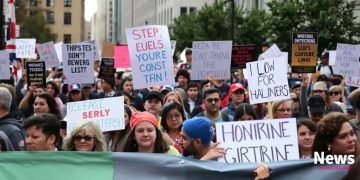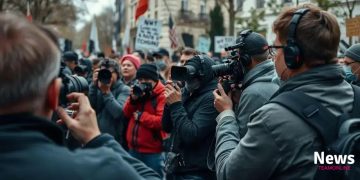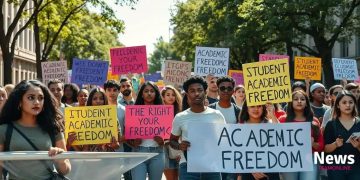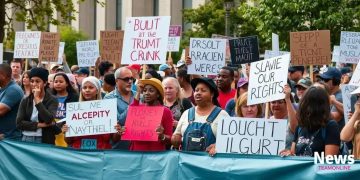Legal actions protecting protesters’ rights: what you need to know
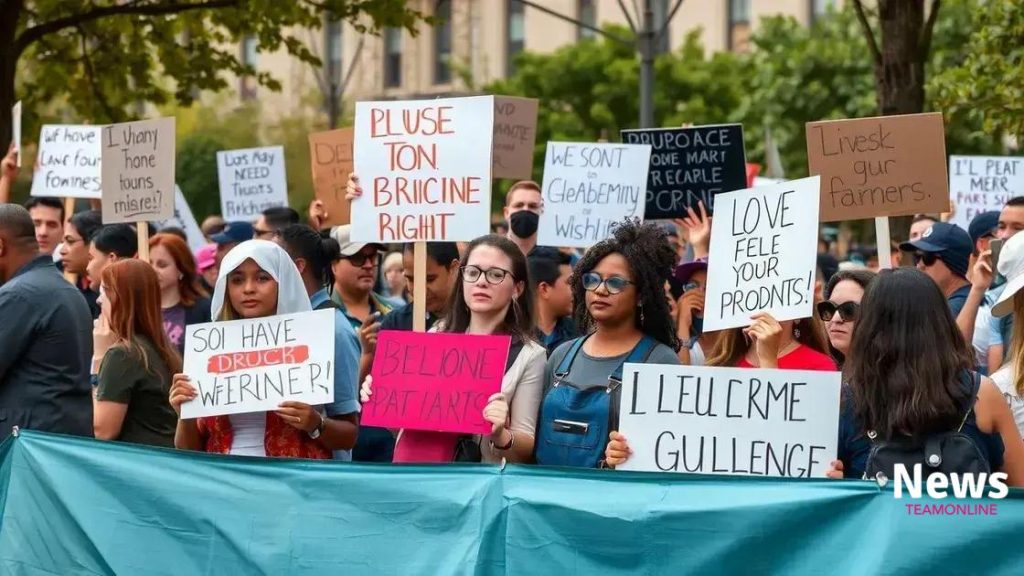
Legal actions protecting protesters’ rights are essential for safeguarding freedom of expression and assembly, ensuring that individuals can demonstrate peacefully without fear of harassment or violence from authorities.
Legal actions protecting protesters’ rights are crucial in maintaining democracy and freedom of expression. Have you ever wondered how these rights are upheld during protests? Let’s explore their significance.
Understanding the legal framework for protests
Understanding the legal framework for protests is essential for anyone wishing to exercise their rights in a democratic society. Laws governing protests help protect individuals while ensuring public safety. These legal protections vary widely across countries and regions, reflecting differences in government systems and societal values.
The Importance of Legal Protections
Legal protections serve several crucial purposes. Firstly, they maintain public order during demonstrations. Secondly, these laws defend the rights of protesters to express their views without fear of violence or repression. It is vital for individuals to know what is allowed and what is not when participating in protests.
- Maintaining peace during protests
- Encouraging free speech and assembly
- Providing avenues for legal redress
- Establishing police conduct guidelines
Moreover, understanding how these laws work can empower citizens to stand up against injustices. For instance, many legal systems enable individuals to lodge complaints if their rights are violated. Knowing your rights is a powerful tool in promoting justice.
Key Components of the Legal Framework
The legal framework consists of several components, such as constitutional provisions, local laws, and international agreements. Constitutional guarantees often provide a foundation for peaceful assembly. In many cases, local laws dictate how and where protests can occur.
International agreements, such as the Universal Declaration of Human Rights, also play a pivotal role, influencing national laws to uphold fundamental rights. Being aware of these layers is crucial for effective advocacy.
In summary, a solid understanding of the legal framework for protests can enhance citizens’ abilities to navigate their rights confidently. It encourages more informed participation in democratic processes, hence enabling change and fostering a culture of accountability. With the right knowledge, individuals can ensure their voices are heard without jeopardizing their safety.
Key legal actions that protect protesters
Key legal actions that protect protesters play a vital role in ensuring that their rights are respected. These actions are designed not only to safeguard protesters but also to uphold the principles of democracy.
Injunctions and Legal Orders
One of the primary methods used to protect protesters is through legal injunctions. These court orders can prevent law enforcement from taking specific actions against demonstrators. For example, if police plan to use excessive force, a judge can issue an injunction to halt those actions.
- Injunctions can protect against unlawful arrests.
- They ensure that protests can occur without interference.
- These orders require police to follow specific protocols.
Furthermore, legal orders serve as a reminder of the law’s boundaries. They empower lawyers to step in when rights are threatened.
Documentation and Legal Support
Another essential action is the documentation of incidents during protests. This includes recording interactions with law enforcement and capturing details of events as they unfold. Such documentation is critical because it provides evidence if legal action is necessary. Protesters should also have access to legal support, ensuring they can consult with attorneys if needed.
Having a legal team ready can safeguard their rights and provide assistance in case legal issues arise, which helps maintain order and peace during the protests.
In addition, many organizations offer legal support hotlines during significant protests. These resources connect protesters with lawyers who can provide emergency assistance.
Public Awareness Campaigns
Public awareness campaigns are another vital legal action. By spreading the word about legal rights, organizers can empower protesters. These campaigns inform individuals about what to expect and how to act during a protest.
- Informational flyers detailing rights can be distributed.
- Workshops can be held to educate about legal protections.
- Social media can be used to spread information quickly.
Such initiatives ensure that everyone involved knows their rights, making them less vulnerable to infringements. Being prepared can lead to a more peaceful and successful protest.
Understanding these key legal actions enables protesters to advocate for themselves effectively. This knowledge encourages informed participation and helps foster a society where voices can be heard without fear.
Case studies of successful legal interventions
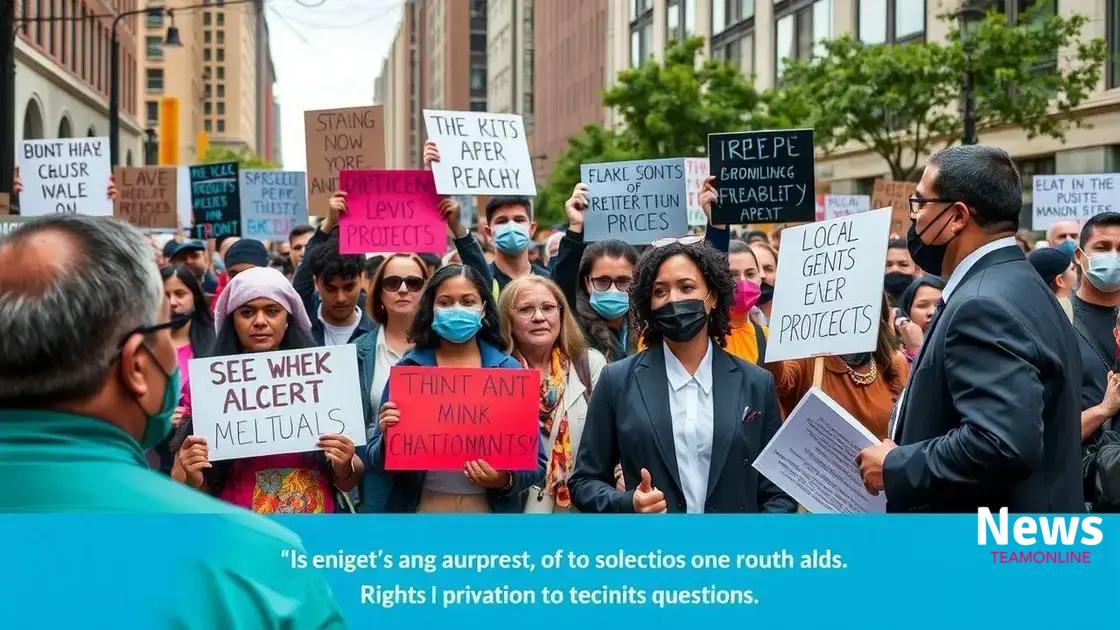
Case studies of successful legal interventions highlight the power of law in protecting protesters. These examples illustrate how legal actions can lead to significant changes, ensuring that rights are upheld during demonstrations.
The Occupy Wall Street Movement
One of the most notable cases is the Occupy Wall Street movement in 2011. Legal teams worked tirelessly to protect protesters from unlawful evictions. Courts issued restraining orders that allowed demonstrators to remain in public spaces despite police attempts to remove them.
- Restraining orders helped maintain the protest site.
- Legal support provided guidance on rights.
- Documentation of police actions led to accountability.
This movement showcased the importance of having legal representation and highlights how timely legal intervention can strengthen a protest’s impact.
Black Lives Matter Protests
Another significant case study involves the Black Lives Matter protests following George Floyd’s death in 2020. During these protests, many were met with aggressive police tactics. Legal organizations stepped in, filing lawsuits against cities for infringing on protesters’ rights.
This led to numerous court rulings in favor of the protesters. For instance, courts prohibited certain police actions like using tear gas against peaceful demonstrators. Such victories showcase the effectiveness of legal action in protecting the rights of those expressing dissent.
The Women’s March
The Women’s March in 2017 also illustrates successful legal intervention. Prior to the event, organizers secured permits ensuring the march could proceed without interference. This preemptive legal action helped avoid complications, allowing thousands to voice their demands freely.
Moreover, some lawsuits challenging the restrictions on march routes resulted in court decisions favoring the demonstrators. These cases emphasize the role of proactive measures to ensure peaceful assembly.
Through these examples, we see how legal interventions serve as powerful tools for protesters. They not only protect the rights of individuals but also affirm the necessity of public discourse in a thriving democracy.
The role of organizations in protecting rights
The role of organizations in protecting rights is vital, especially for protesters seeking to express their views. Numerous groups work tirelessly to ensure that individuals’ rights are defended during demonstrations.
Legal Advocacy Groups
Legal advocacy groups play a crucial role in this landscape. They provide essential resources and support to those engaged in protests. These organizations often offer legal training and assistance to help individuals understand their rights when exercising their freedom of assembly.
- Providing legal representation for protesters.
- Guiding demonstrators on their rights.
- Monitoring protests to document police actions.
By having legal experts in the field, organizations ensure that the voices of protesters can be heard while minimizing legal repercussions.
Grassroots Movements
Grassroots movements also significantly contribute to protecting rights. They mobilize communities and raise awareness about key issues affecting society. These movements often advocate for changes in policies or laws that impact the right to protest.
With strong community support, grassroots groups can also help organize peaceful demonstrations, ensuring that all participants feel safe and informed about their rights. By fostering a sense of unity, these organizations empower individuals to stand together for a common cause.
International Organizations
International organizations like Human Rights Watch and Amnesty International monitor and report on the treatment of protesters globally. These groups hold governments accountable for violations of rights and help ensure that international laws are upheld.
- Documenting abuses during protests.
- Lobbying governments to respect protests.
- Educating the public on international legal standards.
Their efforts can pressure governments to avoid repressive tactics, ultimately securing better protection for protesters.
In summary, organizations dedicated to protecting rights are crucial allies for protesters. Through legal support, community mobilization, and international advocacy, they work to ensure that everyone can exercise their freedom of expression safely and effectively.
Challenges in enforcing protesters’ rights
Challenges in enforcing protesters’ rights can undermine the very foundations of democracy. Despite existing laws aimed at protecting these rights, various obstacles often hinder their effective implementation.
Police Misconduct
One of the primary challenges is police misconduct. Reports of excessive force during protests are common, raising concerns about safety and civil liberties. Sometimes, law enforcement agencies exceed their authority, which can lead to unlawful arrests or aggressive crowd control measures.
- Use of tear gas and rubber bullets against peaceful protesters.
- Targeting individuals for legal representation.
- Inadequate training for handling protests.
These actions can intimidate individuals from exercising their rights and may discourage participation in future protests.
Lack of Legal Knowledge
A lack of legal knowledge among protesters also poses a significant hurdle. Many individuals are unaware of their rights while participating in demonstrations. This ignorance can lead to unintentional violations or missed opportunities for legal recourse.
Educational resources are essential to equip individuals with the knowledge of their rights. By informing protesters of their rights, organizations can improve safety and legal outcomes.
Government Policies
Additionally, government policies can create barriers to exercising rights. Restrictions on permits or designating specific areas for protests can limit effective expression. Such policies may aim to regulate demonstrations but can also suppress legitimate dissent.
- Imposing arbitrary time limits on protests.
- Restricting access to public spaces for demonstrations.
- Using legal loopholes to justify police actions.
While public safety is important, it should not come at the expense of individual rights. Balancing these concerns is vital to uphold democratic principles.
Overall, these challenges require ongoing advocacy and reform efforts. By addressing issues like police misconduct, improving legal knowledge, and reevaluating restrictive government policies, society can foster a more supportive environment for protesters’ rights.
FAQ – Frequently Asked Questions About Protecting Protesters’ Rights
What are the main legal protections for protesters?
Legal protections for protesters include the right to assemble peacefully and express opinions without intimidation from law enforcement.
How can organizations help protect protesters’ rights?
Organizations provide legal support, educate protesters about their rights, and advocate for changes in policies that may restrict demonstrations.
What challenges do protesters face in exercising their rights?
Protesters often encounter challenges like police misconduct, lack of knowledge about their rights, and restrictive government policies.
How can individuals prepare for a protest to ensure their rights are protected?
Individuals can prepare by learning about their legal rights, carrying informational resources, and having access to legal support during protests.
